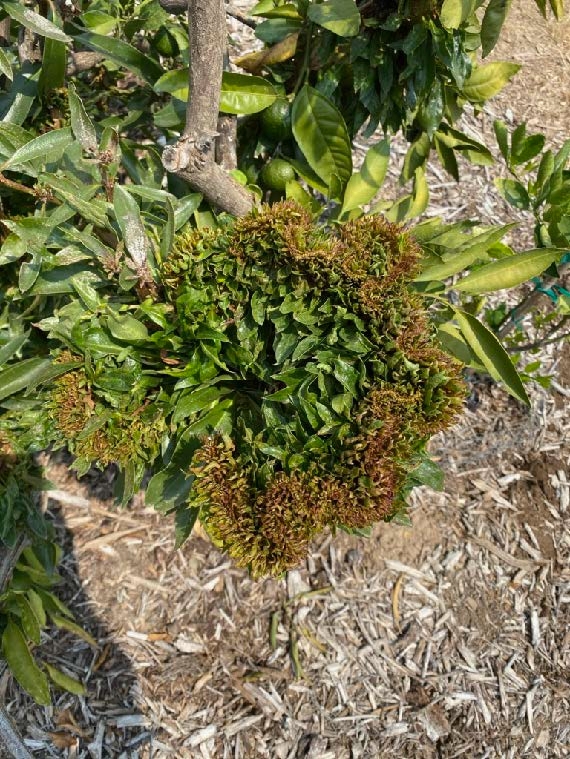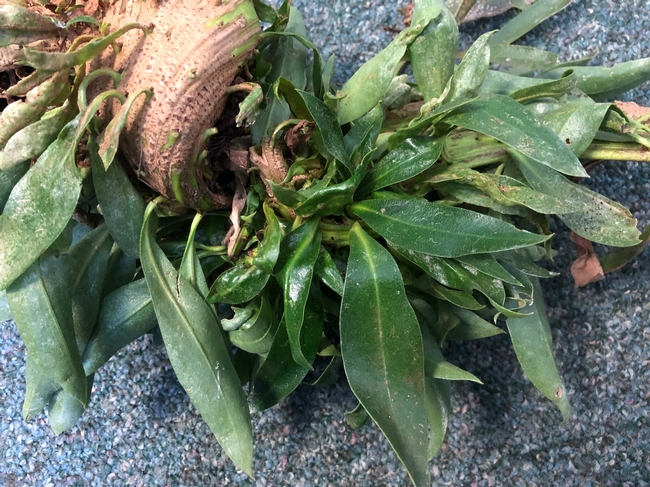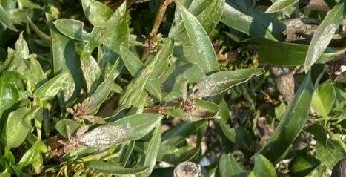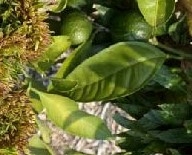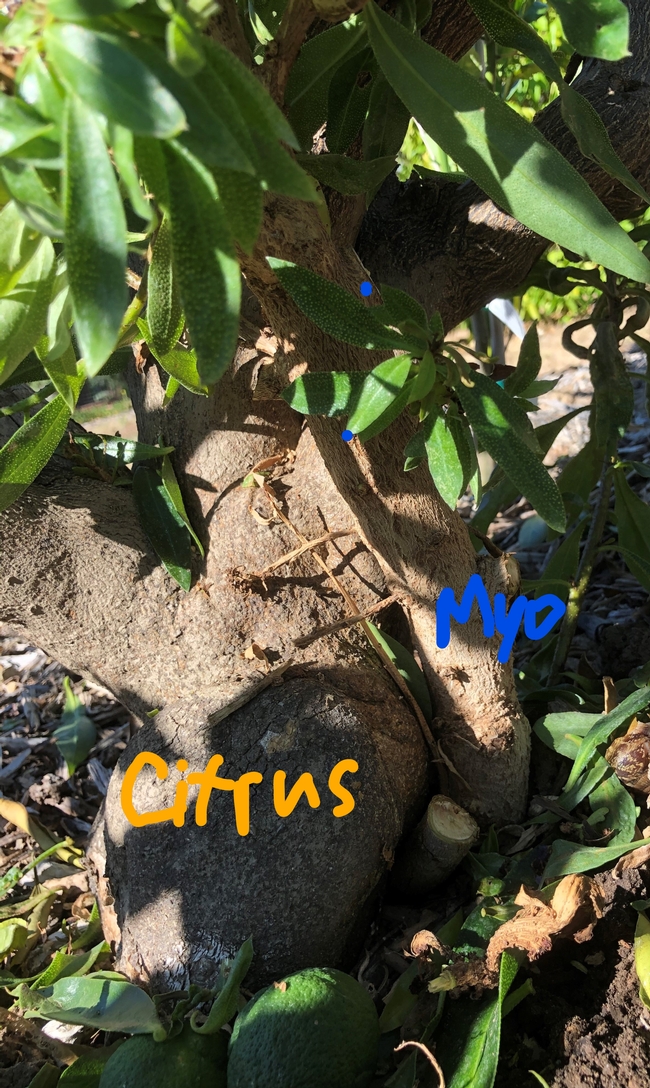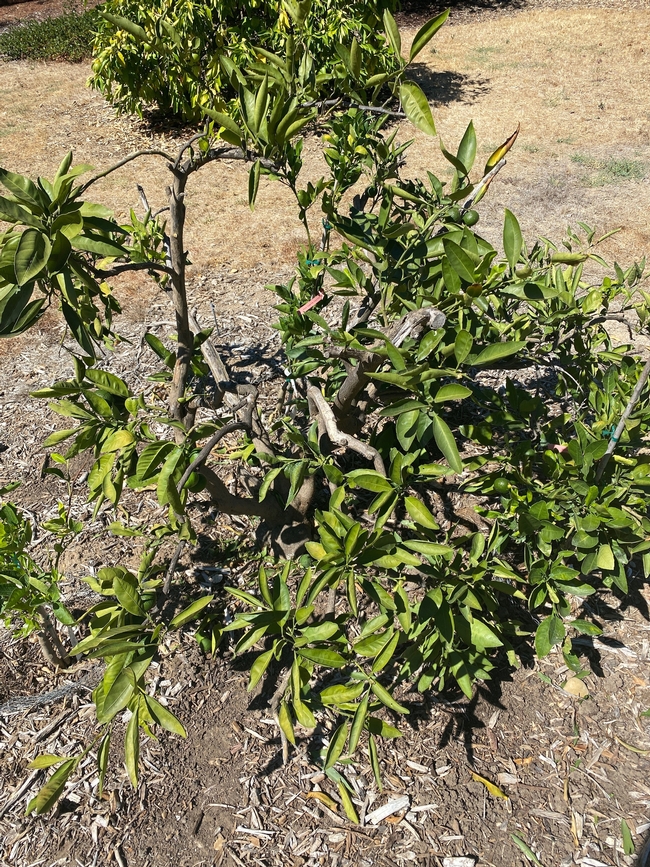So Sphaeropsis tumefaciens causes galls, but it's also been noted to cause witches broom in citrus, as well. Thjs type of broom formation is a wild, though compact growth. It's a dense mass of shoot growth from a single point – a messy mass that even a witch would have a problem using to sweep up. This is a symptom of infection by certain fungi, like rust or mildew or a genetic mutation in the plant itself. If it's a stable genetic change that doesn't alter over time, it could be used in the horticultural trade to propagate dwarfing plants. That might be good in the case of citrus, meaning less pruning. There's already the ‘Flying Dragon' rootstock that causes dwarfing, but it has some problems, like being really slow growing.
Anyway, another cause of undisciplined broom growth is phytoplasma infection. These are bacteria-like organisms that were only discovered in the 1960s and cannot be cultured. This makes it hard to work with them. They can cause debilitating weaknesses in plants besides the broom growth. To complicate the culturing issue, it has a conspirator, which needs to be understood, as well. The phytoplasma is spread by an insect, the same way the Liberibacter bacteria is spread by Asian Citrus Psyllid, causing HLB. So it's necessary to know the biologies of two actors, plus how they interact. The problem of HLB, again.
In India and Iran, there is a crippling disease of lime caused by a phytoplasma that is spread by leafhoppers. You need the specific leafhopper to spread the phytoplasma to spread the disease. No leafhopper and it's unlikely that even if the phytoplasma were here, that it would get spread.
The internet is democratizing. It spreads all kinds of information equally to everyone. So an image comes across my computer, asking if I think the wild growth on the ‘Pixie' mandarin is this WBDL (Witches' Broom Disease of Lime). I don't think so, but you never know what is going to pop up. I was thinking it's probably Sphaeropsis on a new track, and whatever, need to check it out.
And there it is. The wild growth. It fills about a third of the canopy of the little tree.
There's even this flattened stem. Truly weird.
But something does not look right. Is it the phytoplasma causing other types of growth? The leaves don't look right. Citrus leaves have a central vein, with lateral veins. The leaves on the affected part of the tree only have a single mid-vein.
This is not a citrus growth deformity. This is some other plant. Following the stem of the deformed branch to the base of the trunk, there's the “sucker”. And it doesn't look like citrus bark.
This is not even a citrus plant. At some point, a myoporum seedling started growing there. The leaves are similar enough to citrus, that the grower thought it was a citrus branch than had become infected. Well, the myoporum did become ‘infected'. With what, I'm not sure. It could easily have been Sphaeropsis since it is in the Ojai area. Anyway, “when it doubt, cut it out”.
And here is the neat little tree, a third of it gone now and the interior exposed to sun so that it will need to be whitewashed to protect it from sun damage. But, it's not WBDL. This time. It's important to keep looking for what nature and hitchhikers can bring us. It could be a whole lot more serious.
